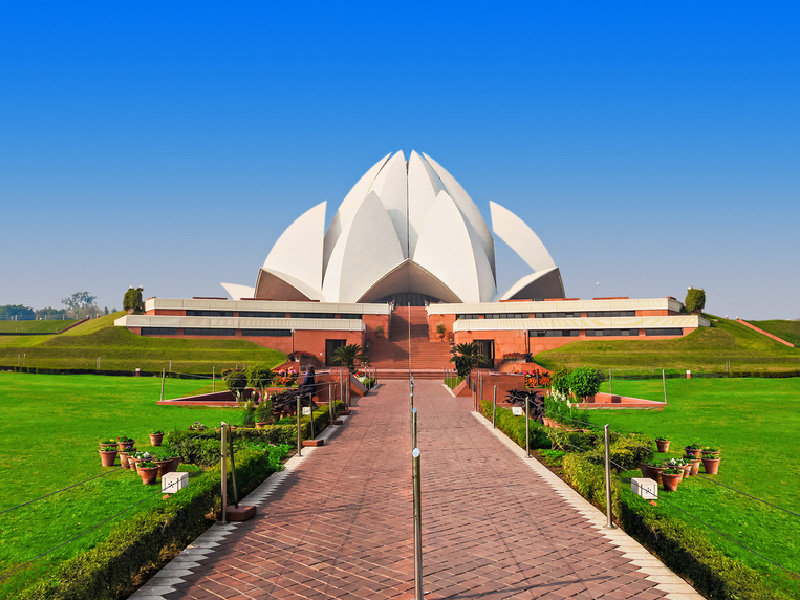Local Attractions
New Delhi, the capital of India, has a rich history. The city is dotted with spellbinding mosques, forts, and monuments left over from the Mughal rulers that once occupied the city. The contrast between rambling Old Delhi and well planned New Delhi is immense, and it’s interesting to spend time exploring both. If you feel in need of some relaxation, just head to one of Delhi’s flourishing landscaped gardens.
Here’s a list of the top attractions and places to visit in Delhi. The great thing is that many of them are free!
Red Fort
Delhi’s most famous monument, the Red Fort, stands not only as a powerful reminder of the Mughal era India but also a symbol of India’s struggle for freedom. It was built by fifth Mughal emperor Shah Jahan, when he decided to shift his capital there from Agra in 1638. The fort’s turbulent history includes being captured by the Sikhs and the British. To take your imagination back to the ancient era, a one hour sound and light show of the fort’s history is held each evening.

Jama Masjid
Jama Masjid is another marvellous treasure of the Old City, and it’s one of the largest mosque in India. Its courtyard can hold an incredible 25,000 devotees. The mosque took six years to build, and was completed in 1656. A strenuous climb to the top of its southern tower will reward you with a stunning view (albeit obscured by metal security grills) across the rooftops of Delhi. Be sure to dress appropriately when visiting the mosque or you won’t be allowed in. This means covering your head, legs and shoulders.
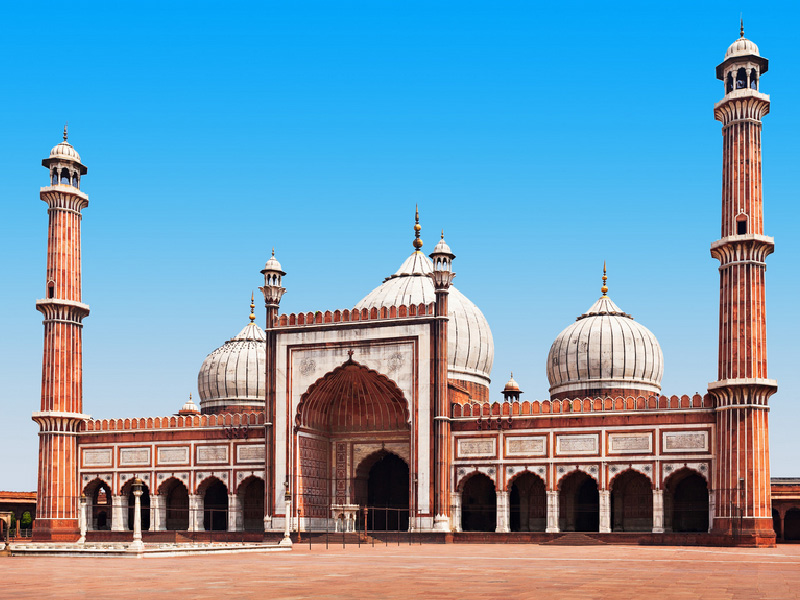
Chandni Chowk
Chandni Chowk, the main street of old Delhi, is a shocking contrast to the wide, orderly streets of New Delhi. Cars, cycle rickshaws, hand-pulled carts, pedestrians, and animals all compete for space. It’s chaotic, crumbling and congested, but completely captivating as well. As one of the oldest and busiest markets in India, its narrow winding lanes are full of inexpensive jewellery, fabrics, and electronics. For the more adventurous, Chandni Chowk is an excellent place to sample some of Delhi’s street food. The renowned Karim Hotel, a Delhi dining institution, is also located there.
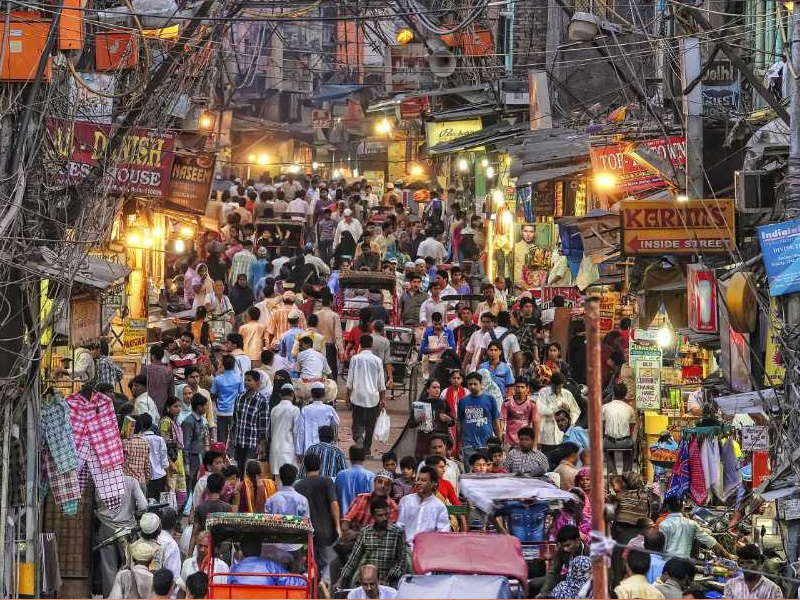
Swaminarayan Akshardham
A relatively new attraction, this massive temple complex was built by the BAPS Swaminarayan Sanstha spiritual organization and opened in 2005. It’s dedicated to showcasing Indian culture. As well as the astonishing architecture of the pink stone and white marble shrine, the complex includes sprawling garden, sculptures, and boat ride. Allow plenty of time to explore it thoroughly — at least half a day. Do note that cell phones and cameras are not permitted inside.

Humayun’s Tomb
If you think Humayun’s Tomb looks a bit like the Taj Mahal in Agra, that’s because it was the inspiration for the Taj Mahal’s creation. The tomb was built in 1570, and houses the body of the second Mughal emperor, Humayun. It was the first of this type of Mughal architecture to be built in India, and the Mughal rulers followed it up with an extensive period of construction all over the country. The tomb is part of a greater complex that’s set among beautiful gardens.
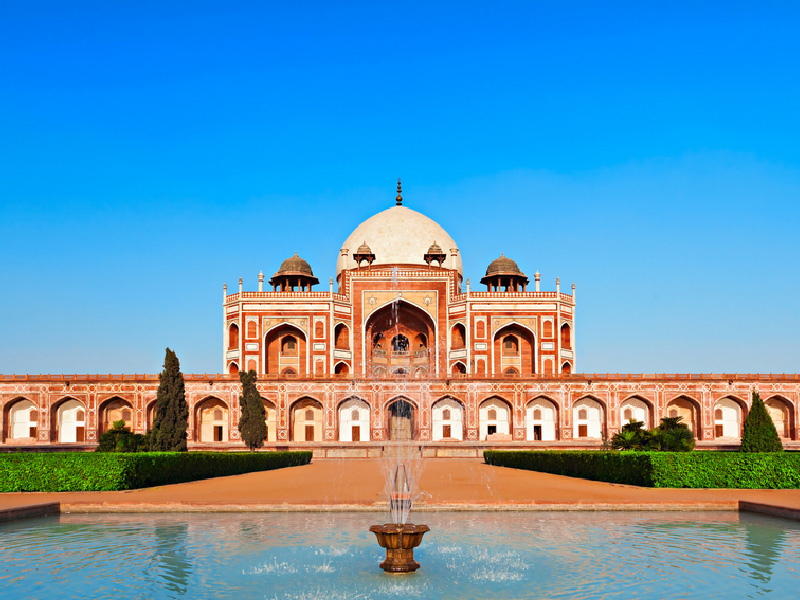
Qutub Minar
Qutab Minar, the tallest brick minaret in the world, is an incredible example of early Indo–Islamic architecture. It was built in 1206, but the reason remains a mystery. Some believe that it was made to signify victory and the beginning of Muslim rule in India, while others say it was used to call the faithful to prayer. The tower has five distinct stories, and is covered with intricate carvings and verses from the holy Quran. There are also a number of other historic monuments on the site.
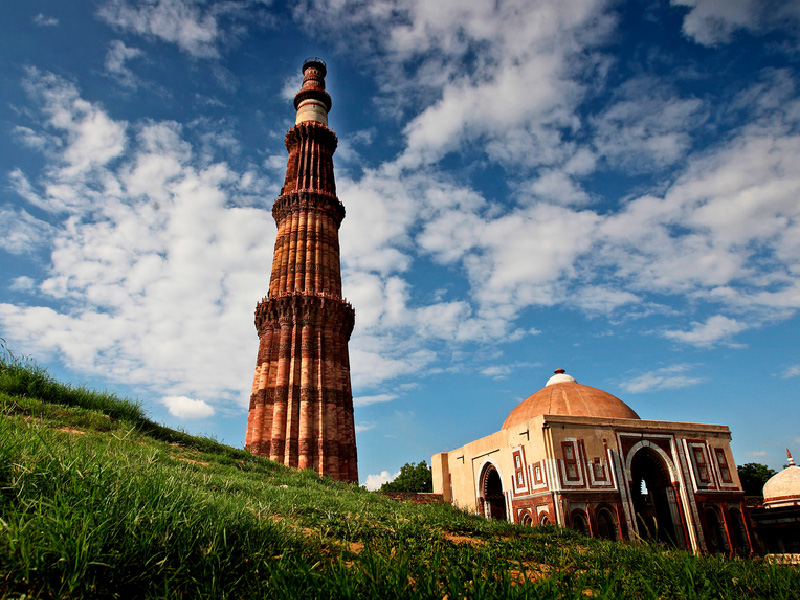
India Gate’s
The towering archway of India Gate at the centre of New Delhi is a war memorial, built in memory of the Indian soldiers who lost their lives fighting for the British Army in World War I. At night it glows warmly under floodlights, and the gardens that line its boulevard. While at India Gate, you can also view Rashtrapati Bhavan, home to the President of the world’s largest democracy.
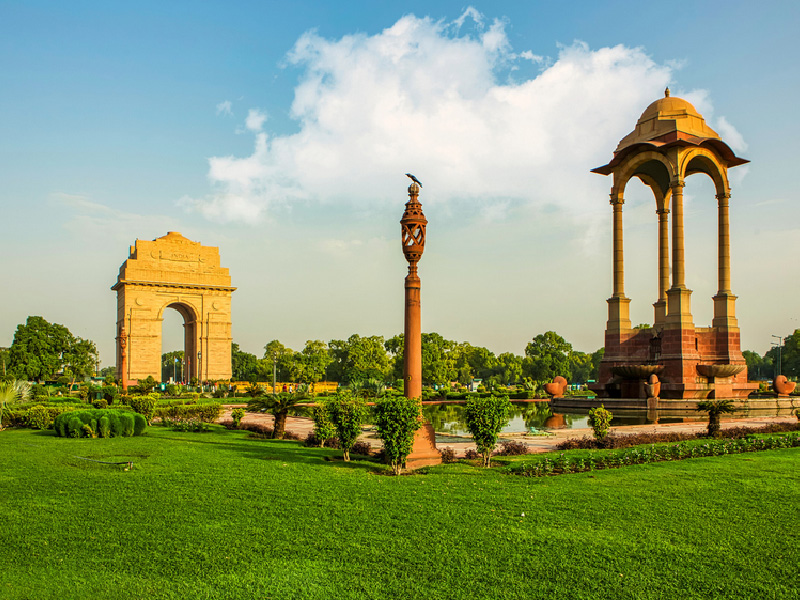
Lotus (Bahai) Temple
The Bahai Temple is commonly called the Lotus Temple, as it’s shaped like a lotus flower. It’s particularly pretty at night, when it’s attractively lit up. Made out of concrete covered in white marble, the temple belongs to the Bahai Faith, which proclaims the unity of all people and religions. Everybody is welcome there.
